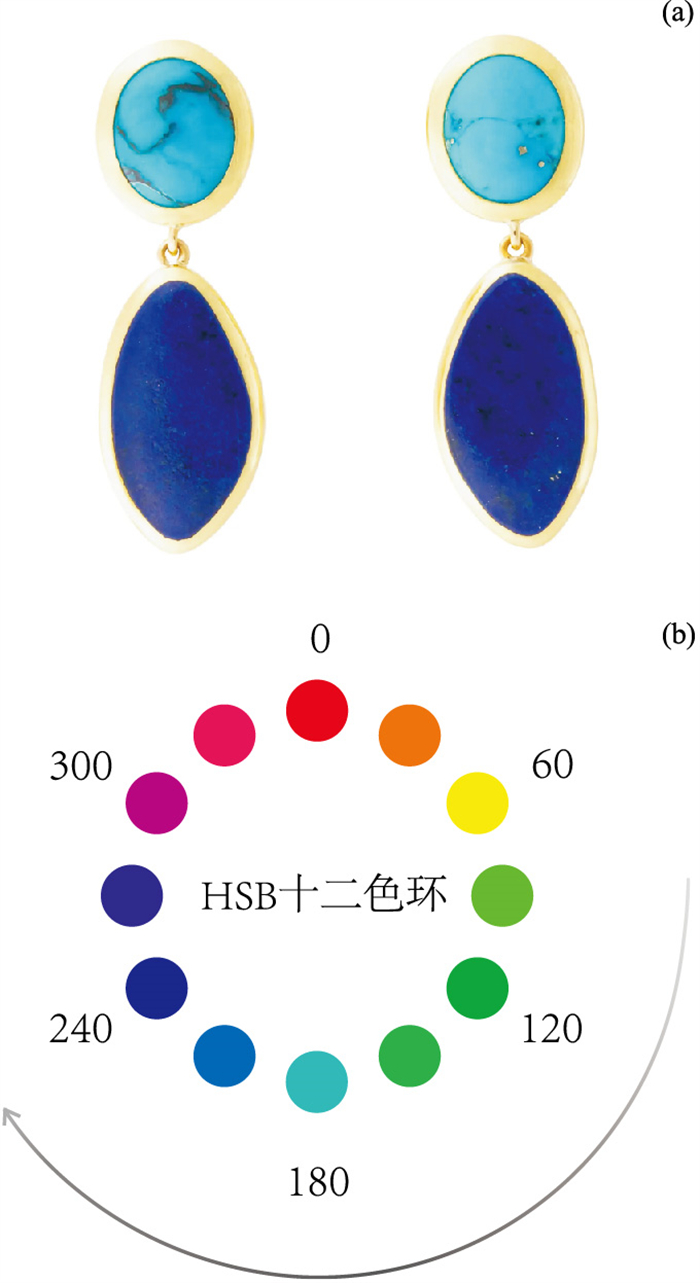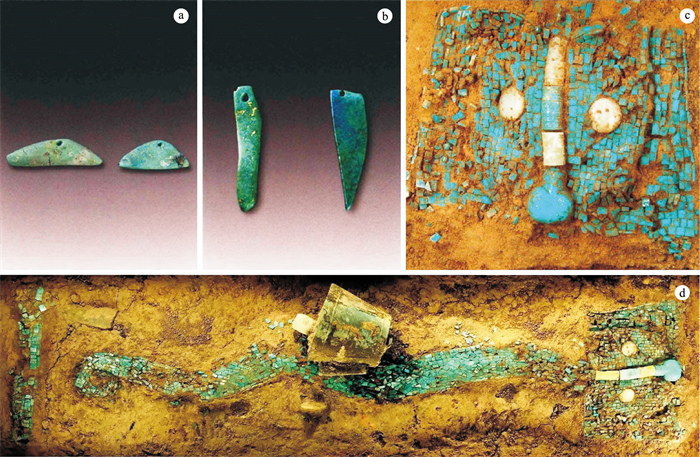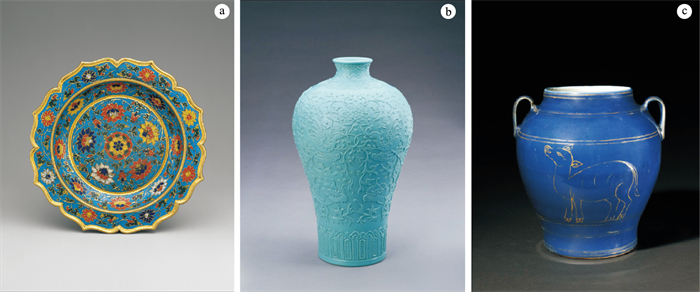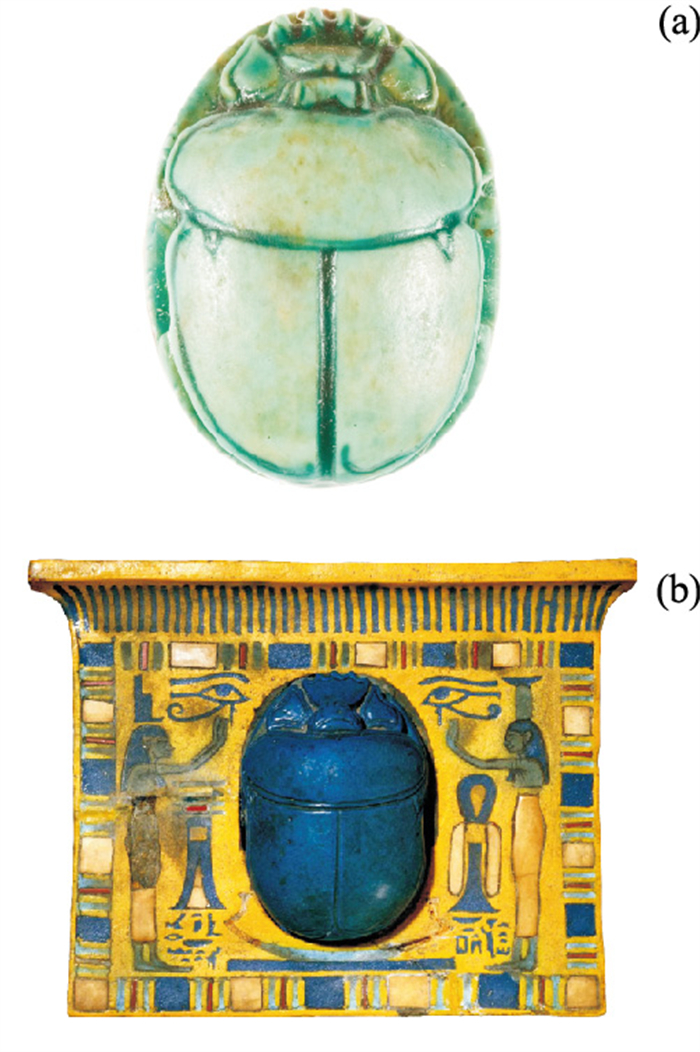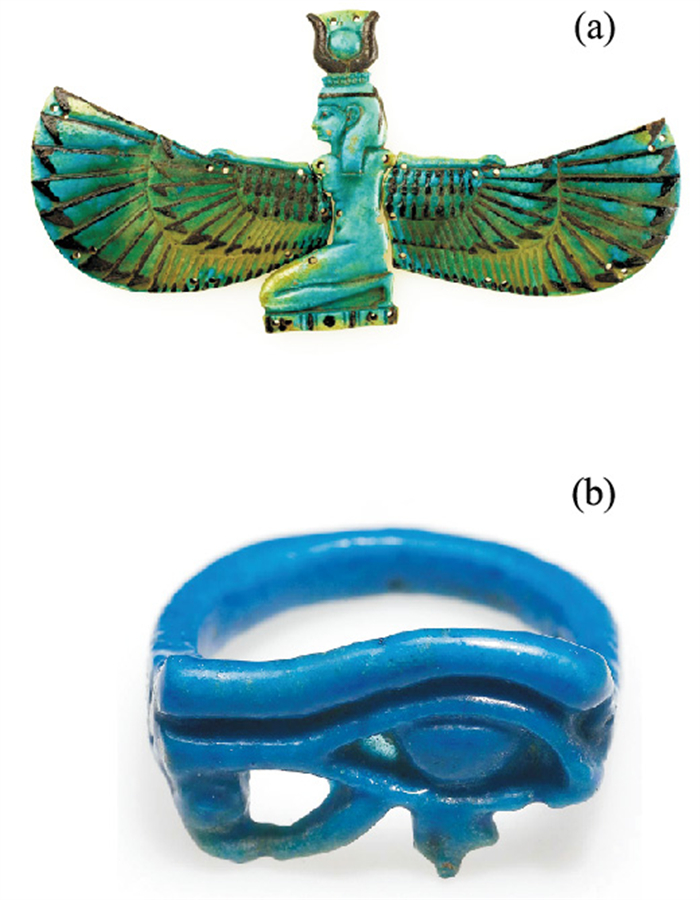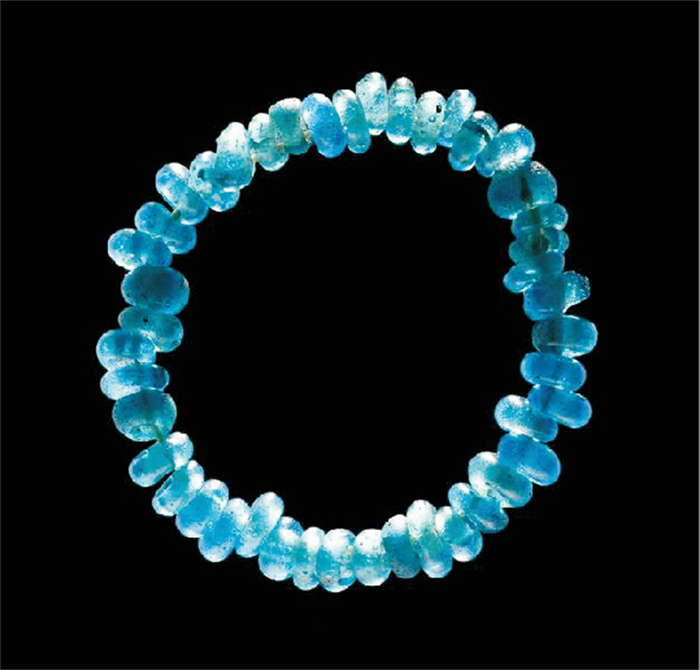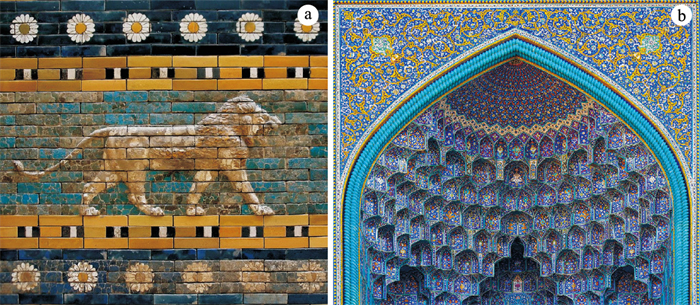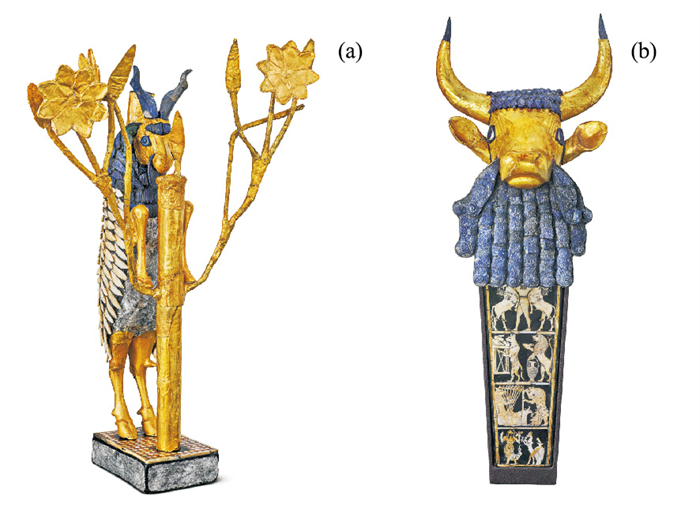
Ram in the thicket (a)and lyre fragment bull head (b) from the Royal Cemetery at Ur(University of Pennsylvania Museum of Archaeology and Anthropology)
Figures of the Article
-
![]() A pair of turquoise and lapis lazuli earrings (a) and the hue range of "Qing" color (b). The 12-color circle is defined with HSB (H-hue, S-saturation, B-brightness) color model. The H values are in degrees (°) and increase every 30° in clockwise direction from 0°, S=B= 100%. The grey-colored arc is from 87°to 239°
A pair of turquoise and lapis lazuli earrings (a) and the hue range of "Qing" color (b). The 12-color circle is defined with HSB (H-hue, S-saturation, B-brightness) color model. The H values are in degrees (°) and increase every 30° in clockwise direction from 0°, S=B= 100%. The grey-colored arc is from 87°to 239°
-
![]() "Blue" and "Qing" (blue-green) in nature, Mount Fitzroy, Patagonia
"Blue" and "Qing" (blue-green) in nature, Mount Fitzroy, Patagonia
-
![]() Turquoise artifacts from Jiahu site about 8 000-9 000 years ago (a, b) and a turquoise dragon from Erlitou site (1740-1600 BC)(c, d), both in Henan Province, China
Turquoise artifacts from Jiahu site about 8 000-9 000 years ago (a, b) and a turquoise dragon from Erlitou site (1740-1600 BC)(c, d), both in Henan Province, China
-
![]() Tutankhamun pectoral, the 18th Dynasty of ancient Egypt(Egyptian Museum, Cairo)(a)and pectoral and necklace of Sithathoryunet with the name of Senwosret II, the 12th Dynasty of ancient Egypt(Metropolitan Museum of Art)(b)
Tutankhamun pectoral, the 18th Dynasty of ancient Egypt(Egyptian Museum, Cairo)(a)and pectoral and necklace of Sithathoryunet with the name of Senwosret II, the 12th Dynasty of ancient Egypt(Metropolitan Museum of Art)(b)
-
![]() Ram in the thicket (a)and lyre fragment bull head (b) from the Royal Cemetery at Ur(University of Pennsylvania Museum of Archaeology and Anthropology)
Ram in the thicket (a)and lyre fragment bull head (b) from the Royal Cemetery at Ur(University of Pennsylvania Museum of Archaeology and Anthropology)
-
![]() The main ancient mines of turquoise and lapis lazuli, and the general flow direction of lapis lazuli in Eurasia
The main ancient mines of turquoise and lapis lazuli, and the general flow direction of lapis lazuli in Eurasia
-
![]() Dark green glaze ring with grain patterns from the Warring States Period (Yiyang Municipal Museum, Hunan Province, China)
Dark green glaze ring with grain patterns from the Warring States Period (Yiyang Municipal Museum, Hunan Province, China)
-
![]() Foliated dish with floral scrolls, early Ming Dynasty(Metropolitan Museum of Art)(a); turquoise blue porcelain vase embossed with dragon, phoenix, and peony pattern, Qianlong, Qing Dynasty(Palace Museum, Beijing)(b); and lapis lazuli blue double handle porcelain pot with gold color cattle, Hongzhi of Ming Dynasty(Palace Museum, Beijing)(c)
Foliated dish with floral scrolls, early Ming Dynasty(Metropolitan Museum of Art)(a); turquoise blue porcelain vase embossed with dragon, phoenix, and peony pattern, Qianlong, Qing Dynasty(Palace Museum, Beijing)(b); and lapis lazuli blue double handle porcelain pot with gold color cattle, Hongzhi of Ming Dynasty(Palace Museum, Beijing)(c)
-
![]() Turquoise faience scarab from the temple of Hatshepsut, the 18th Dynasty of ancient Egypt(Metropolitan Museum of Art)(a); pectoral with glaze of lapis lazuli blue, the 19th Dynasty of Ancient Egypt(British Museum) (b)
Turquoise faience scarab from the temple of Hatshepsut, the 18th Dynasty of ancient Egypt(Metropolitan Museum of Art)(a); pectoral with glaze of lapis lazuli blue, the 19th Dynasty of Ancient Egypt(British Museum) (b)
-
![]() Faience winged Goddess, the 19th to 22nd Dynasty of ancient Egypt (Metropolitan Museum of Art) (a); and eye of Horus ring made of faience (b), the 18th Dynasty of Ancient Egypt (Museum of Fine Arts, Boston)
Faience winged Goddess, the 19th to 22nd Dynasty of ancient Egypt (Metropolitan Museum of Art) (a); and eye of Horus ring made of faience (b), the 18th Dynasty of Ancient Egypt (Museum of Fine Arts, Boston)
-
![]() Annular blue Mesopotamian glass beads (National Museum of Denmark)
Annular blue Mesopotamian glass beads (National Museum of Denmark)
-
![]() Brick reliefs of walking lions from ancient Babylon (a) and the entrance of Shah mosque of Isfahan (b)
Brick reliefs of walking lions from ancient Babylon (a) and the entrance of Shah mosque of Isfahan (b)


 Download:
Download:
